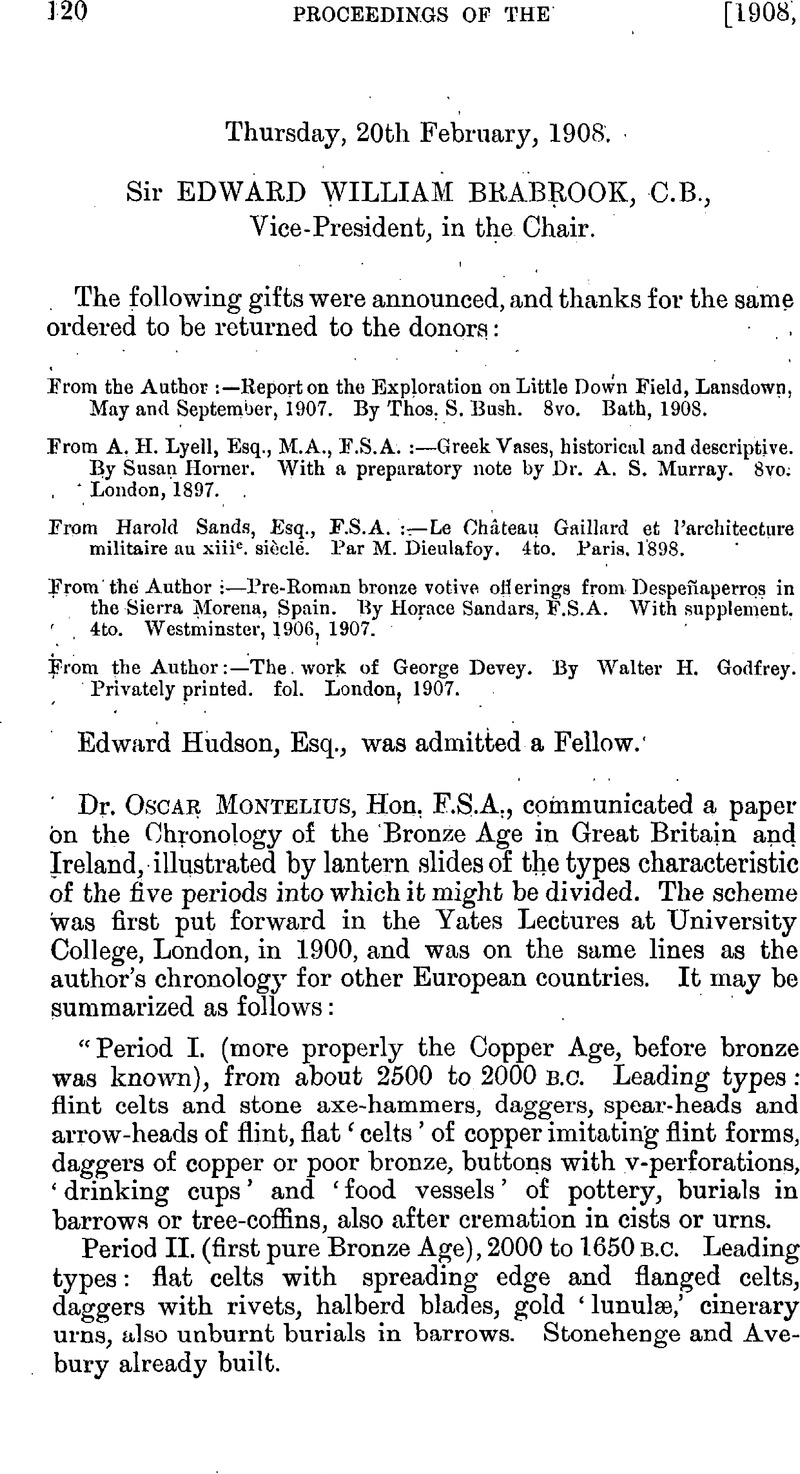Published online by Cambridge University Press: 10 May 2010

page 122 note * The full evidence of this will be given in my forthcoming work Scripta Minoa, vol. i.
page 123 note * See B. M. Bronze Age Guide, 96, fig. 97.
page 123 note † Mortimer, Forty Years' Researches, 169.
page 124 note * Useful materials relating to these finds and the various forms of these glazed beads and pendants have been collected by Mr. L. Mc. L. Mann in Proceedings of the Society of Antiquaries of Scotland, lx. 387, and p. 396 seqq., and by the HonAborcromby, John, Anthropological Journal, xxxv. (1905) 256Google Scholarsegq. Mr. Abercromby concludes (p. 364) that importation of the beads in question coincides with part of the Hallstatt period of Central Europe, and may be placed approximately between 900 and 600 b.c. The association with these of amber ornaments in the Wiltshire Barrows, as he justly points out. answers rather to the early Iron Age practice on the Continent than to the pure Bronze Age, at any rate in the Central European area. I have touched on these connexions below. It will be seen, however, that the Egyptian evidence tends to carry back the first introduction of these glnzed beads and ornaments in Britain to a somewhat earlier date than 800 b.c.
page 124 note † In the case of a specimen found in a Bronze Age “thurible” at Clayton Hill, Sussex, Archæological Journal, xix. 186 ; Sussex Archæological Collections, viii. 285.
page 124 note ‡ Horsfield, History of Lewes, 47. The objects are now in the British Museum.
page 124 note § Proceedings of the Society of Antiquaries, 2nd. S. viii. 175.
page 125 note * In the Ashmolenn Museum, Oxford.
page 125 note † Certain small derivative forms still occur ander later dynasties.
page 126 note * Archaeologia, xxx. 330.
page 126 note † A “star” bead of this kind was associated with “compound” beads like fig. 4 in a Bronze Age urn burial at Stevenston in Ayrshire. See L. Me. L. Mann, Proceedings of the Society of Antiquaries of Scotland, lx. 387.
page 127 note * L. Savignoni, Scaci e scoperte nella necropoli di Phaestos. Monnmenit Antichi, 1904, 632–33, fig. 102e.
page 128 note * It does not seem to have been noticed that very valuable evidence for the dating of the central point of the period covered by the great Hallstatt Cemetery is supplied by the class of fibulæ with a long pointed foot and the bow often set with bone nnd amber which answers to a class similarly adorned found with proto-Corinthian vases in the early tombs of Syracuse belonging to the period of about 700–650 b.c. (Scaxi nella, Necropoli del Fasco (Orsi, Not. d. Scavi, 1895) p. 16, fig. 2, &c). Corinthian trade, or that of her great colonies on the Adriatic shores, seems to have been instrumental in spreading these fibula types through the lands north of the Gulf.
page 128 note † Archaeologia, xvi. 541.
page 128 note ‡ If the coin was really of silver and not, as is very probable, of Base gold, it could not have belonged to the earliest period of the British coinage.